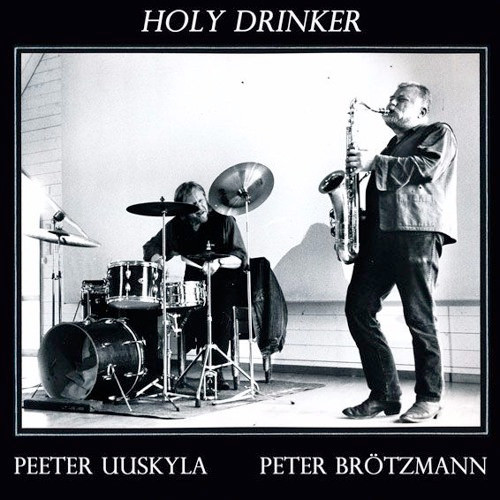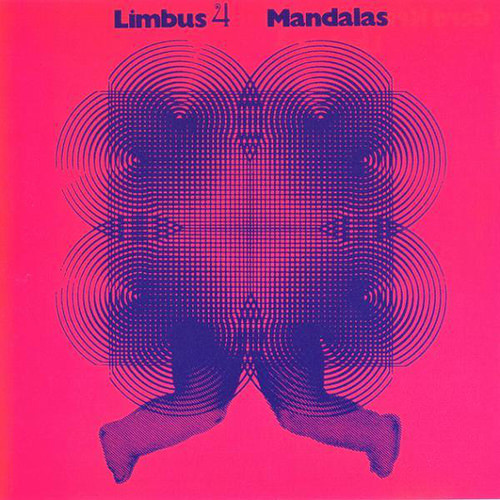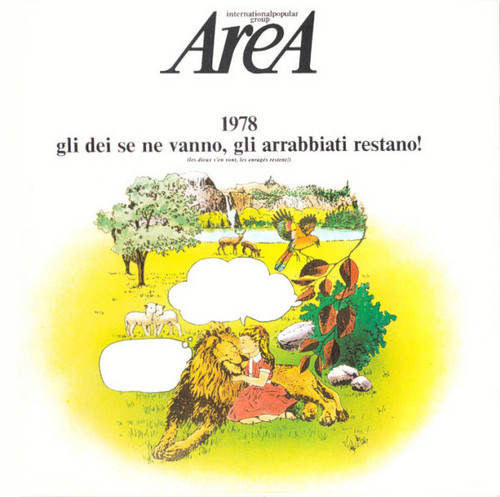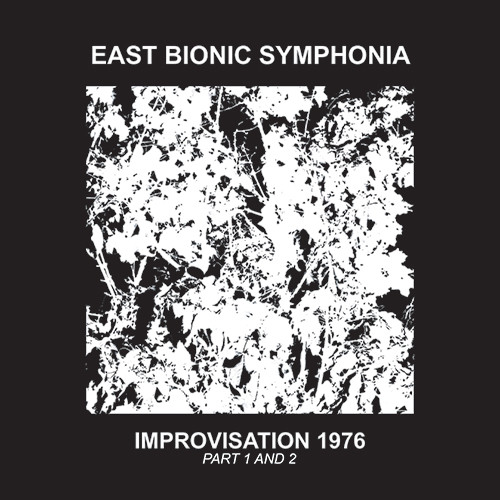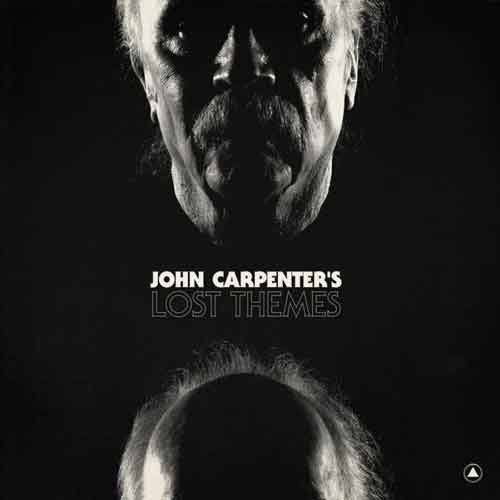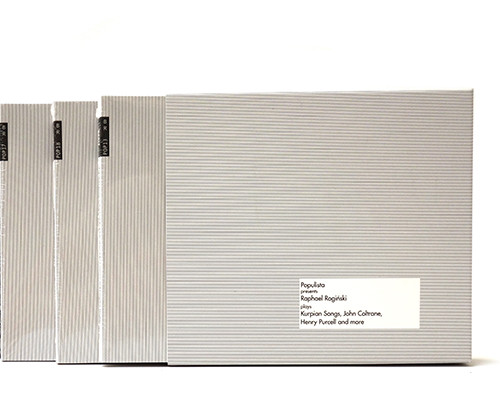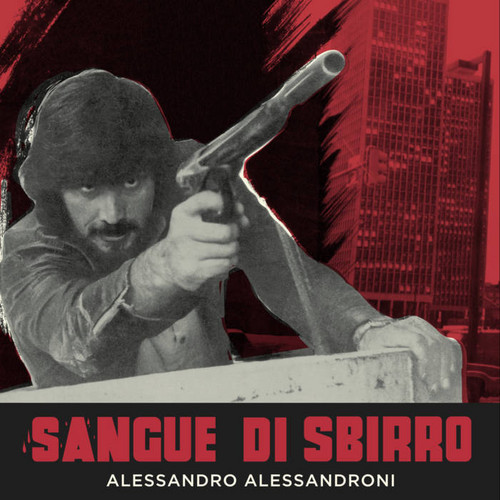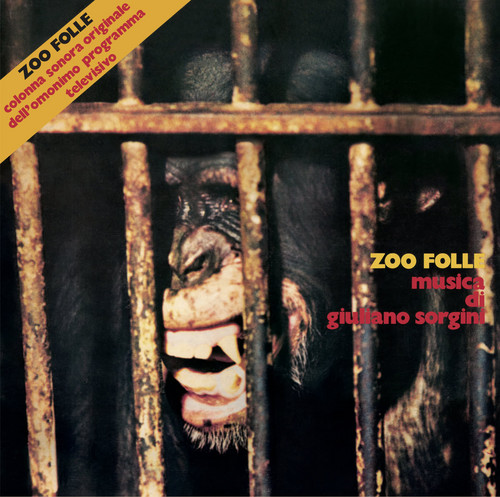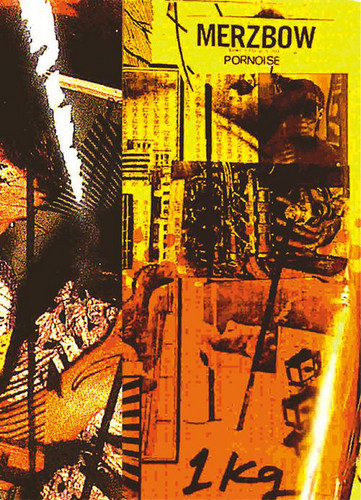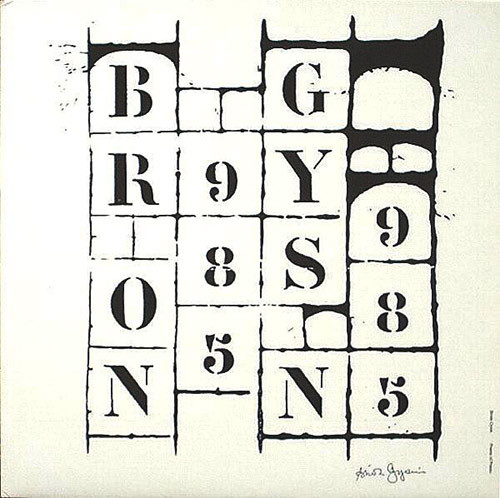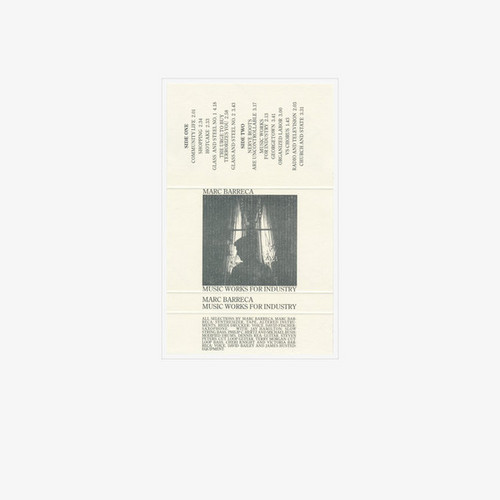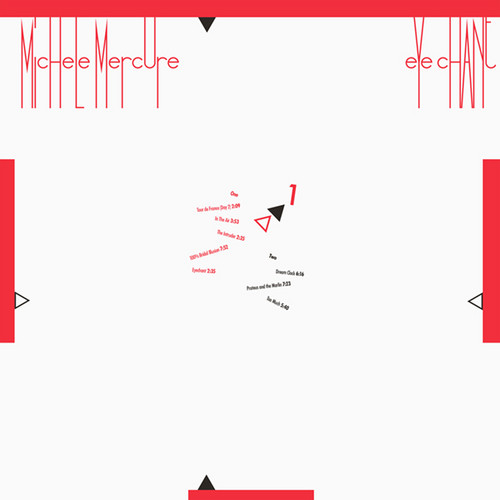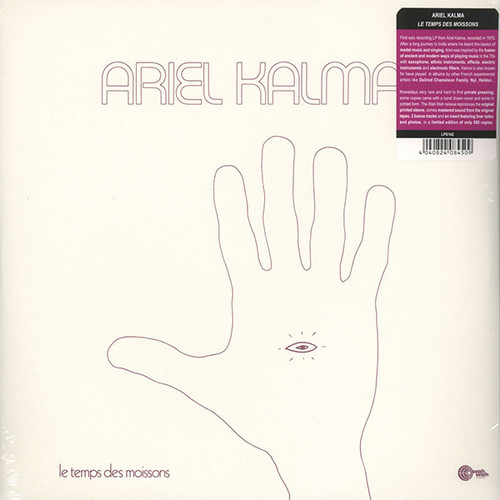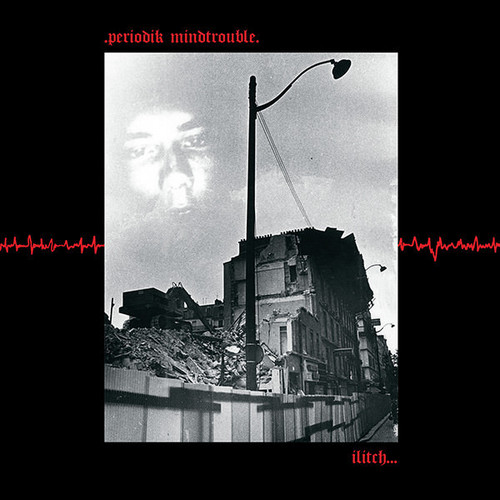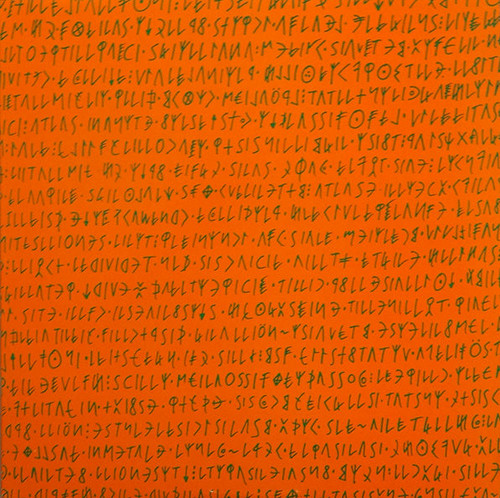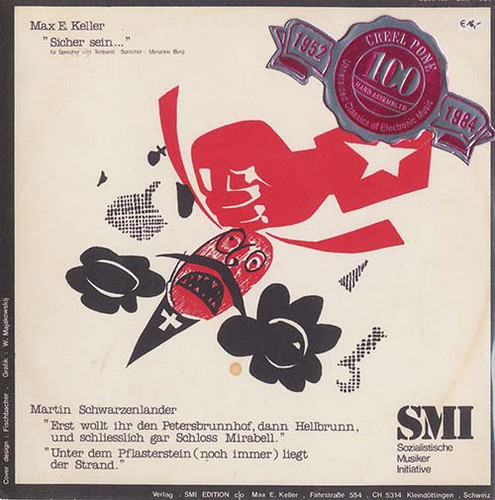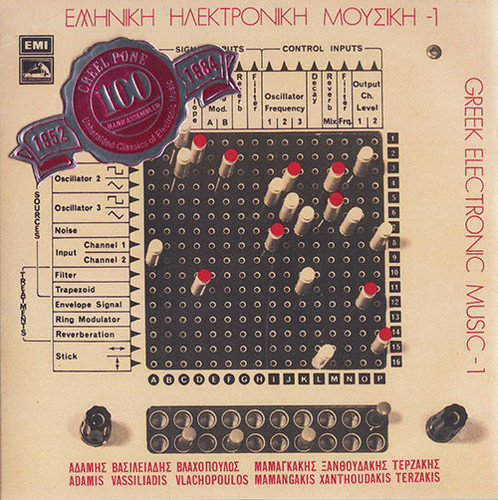Back in stock
Holy Drinker
Limited to 150 handmade covers, promotional 7". For almost twenty years, Peter Brötzmann and Swedish drummer Peeter Uuskyla have been playing regularly together as a duo and in a trio with Danish bassist Peter Friis Nielsen. Brötzmann’s collaborations with drummers are many, but the duo with Uuskyla represents an alternative to those with, say, Hamid Drake or Steve Noble. Uuskyla’s style is jagged, full of twists and turns. Brötzmann adapts by harking back to his sound of the 70s and 80s. Straig…
Mandalas
One of the first albums released on Ohr records, Limbus 4 'Mandalas' ranks with the Kluster LP's as one of the most challenging krautrock albums. This is the 2nd Limbus album (their even more obscure debut from 1969, under the name Limbus 3) , which was originally issued by OHR in 1970. A fantastic dose of early 70s German freeform weirdness and an essential reissue for the tuned-out community. "Formed in 1968, Limbus were a most unusual band who grew a unique music out of jazz, folk and a…
1978 Gli Dei Se Ne Vanno, Gli Arrabbiati Restano
1978 Gli dei se ne vanno, gli arrabbiati restano! ("The gods depart, the angry remain!") is the sixth album of the Jazz fusion band Area and was released in 1978, as the title says. It is the first album without guitarist Paolo Tofani, and it is also the first album whose lyrics were not written by Gianni Sassi. Also, noticeably it is the only album in which Demetrio Stratos is credited as a composer.Area has stripped their sound a bit. Not drastically, but the experimental, avant-garde and fusi…
Desiree Song
We’re proud to introduce the new Superfly reissue of splendid deep independent jazz LP! Great from start to finish, this is the kind of record you want to play again and again! You won't find the name Bobby Jackson in the jazz books. Yet here is a remarkable man who did more than anyone to promote live jazz in his hometown of Minneapolis, risking everything to open a venue for jazz lovers and putting on such luminaries as Freddie Hubbard, Roland Kirk and Elvin Jones. In so doing, he rode the…
Improvisation - Part 1 & 2 (Lp) + Part 3
** edition of 200, silkscreened cover** During the mid-1970s, a group of art students at the Bigakko school in Tokyo, working under Takehisa Kosugi, the renowned Fluxus composer, violinist, and member of Group Ongaku and The Taj-Mahal Travellers, came together as the free improvisation collective East Bionic Symphonia. They recorded a single album - their graduation project, released in 1976 under the title Recorded Live, before going their separate ways. While largely overlooked at the ti…
Ems Synthi AKS Improv 1972-1973
"During his lifetime, West Yorkshire, UK-born Alan Sutcliffe (1930-2014) founded the Computer Arts Society, produced animation for Ridley Scott’s 1979 film Alien (seen in the cover art) and acted as part-time director for Electronic Music Studios, creators of the EMS Synthi AKS. Now his early 70s improvisations on that legendary instrument have finally been released, adding scope to a man already regarded as a genius. The first side of EMS Synthi AKS Improv consists of five tracks where pulsing,…
Lost Themes
John Carpenter has been responsible for much of the horror genre’s most striking soundtrack work in the fifteen movies he’s both directed and scored. The themes can instantly flood his fans’ musical memory with imagery of a menacing shape stalking a babysitter, a relentless wall of ghost-filled fog, lightning-fisted kung fu fighters, or a mirror holding the gateway to hell. The all-new music on Lost Themes asks Carpenter’s acolytes to visualize their own nightmares.“Lost Themes was all about hav…
Populista Box
A lovely 3cd box collecting the latest Roginski efforts on Bolt records. "An imperial person complained to Mozart that there were too many notes. A merely imperious trumpeter said pretty much the same to John Coltrane. Here’s a kind of answer. Polish guitarist Raphael Roginski, perhaps most widely known for his work with the Shofar trio, slows up and spaces out Coltrane’s music, unwinding some of those much covered test pieces – “Equinox”, “Countdown”, “Mr PC” – and taking them almost to stallin…
Sangue di Sbirro
Perhaps not everyone knows that Alessandro Alessandroni, the Master of Italian library music, had also composed several original soundtracks from late ’60s to early ‘80s, especially for many “genre” movies such as poliziotteschi, sexy comedies, spaghetti western, horror and thriller. Among them, Sangue di Sbirro (Bloody Avenger), is certainly one of the most prestigious works made for Italian cinema in the 70s: an Italian noir set in Philadelphia, where the jazz-funk library’s background o…
Zoo Folle
**restocked, last copies** First official reissue ever for this Italian holygrail soundtrack, finally back to life in a longwaited 180gr. limited edition supervised by M° Giuliano Sorgini himself, who also signs here his personal liner notes. Remastered from the original master tapes preserved for more than 40 years in almost perfect shape, Zoo Folle is a super-wanted psych-funk album, a truly masterpiece for all breaks-beat lovers, full of rhythmic percussions, acid flute, synth works, dar…
Pornoise
An epic 1984 masterpiece from Masami at the peak of his creativity. & CD set plenty of hectic and lumbering rhythms, weird vocal warble, frantic noise, fucked up grooves, spooky synth ambience, droning chant ranging from silly to sublime, musique concrete, and echoing psych weirdness. Despite the seeming chaos, Merzbow has structured into 24remarkably cohesive individual tracks identities. Recorded and Mixed at ZSF Produkt Studio in 1984 and published in tape format in 1987 by ZSF Produkt. I…
Poems of poems
His record presents some of the most important experiments in cut-up and recording technique by the famous poet and artist, Brion Gysin. Originally recorded in 1958 at the histori- cal Beat Hotel in Paris: ‘Language is an abominable misunderstanding which makes up a part of matter. The painters and the physicists have treated matter pretty well. The poets have hardly touched it. In March, 1958, when I was living at the Beat Hotel, I proposed to Burroughs to at least make available to literature …
Music Works for Industry
Marc Barreca’s Music Works for Industry is a layered assertion. An economic mantra for the mind to spin, like the many loops on this recording, or churn, as gears of some godhead machine. From the pool of playful compositions, a social subtext appears – a somewhat sardonic riposte to the commercial and cynical abuse of music and musicians. The work profits the listener over industry. Said another way, its motivations are more generative than lucrative.
No longer than four minutes, no shor…
Eye Chant
Originally issued in 1986. You can see the sounds her voice makes. The literal depiction of this, a photograph of Michele Mercure with an eyeball in her mouth, is removed in the updated album art. The original graphic elements are left to suspend, speak, and sing across time. In the absence of the decade-specific portraits, the redesigned edition is dislocated from a particular or linear history. Our initial point of encounter is artifactual; a trace in place of a scar. Accordingly, Michele’…
Suicide
Suicide's landmark self-titled LP was originally released in 1977, seven years after the group's initial conception as part of the performance art scene on the Lower East Side. It is hard to overstate the importance of the seven tracks on Suicide, which paved the way for punk, industrial, hip hop, noise and beyond. "Ghost Rider" accelerates with brutal anguish and desire for everything rock 'n' roll. Martin Rev's utterly singular "instrument" pounds out a synthetic soundscape, while Alan …
Le Temps Des Moissons
A timeless masterpiece! Finally available on LP, first solo recording album from Ariel Kalma, recorded in 1975. After a long journey to India where he learnt the basics of modal music and singing, Ariel was inspired by the fusion of ancient and modern ways of playing music in the 70s with saxophone, ethnic instruments, effects, electric instruments and electronic filters. Kalma is also known for have played in albums by other French experimental artists like Delired Chameleon Family, Nyl, Heldon…
Periodikmindtrouble
Milestone!! Dreamy and cosmic, with long drones, deconstructed guitars and repetitive organ chords that are both bleak and mesmerizing, falling somewhere between Brian Eno, Conrad Schnitzler, and Heldon, with similar pulsing electronic sonic space visions. "In the mid-1970s Parisian composer and multi-instrumentalist Thierry Müller began operating primarily under the Ilitch moniker. Juxtaposing dark, electronic soundscapes and solo guitar improvisations, Ilitch created some of the most enduring …
The Wind Collector
*5 very last copies just found by chance - original Divergo LP edition* As we’re becoming steadily aware, Gigi Masin and his mates made some truly beautiful music in the late ‘80s which is only just properly coming to light in recent years. Blessed with an almost ineffable air of sophistication and a sort of Venetian play-of-light, their music had existed quietly on the fringes, minding its own business until Music From Memory illuminated their work with 2014’s gorgeous Talk To The Sea com…
SMI, Sozialistische Musiker Initiative
Creel Pone here resuming the regular one-a-week schedule for the next few weeks / months, starting off here with easily the noisiest entrant since Pierre Henry’s “Mise en Musique” - possibly even moreso! - a split LP of Socialist Text-Sound & Musique Concrète works by composers Max Keller and Martin Schwarzenlander. The A-side piece, Keller’s “Sicher Sein...” interjects continuous, ululated German / Austrian texts with jabs of random, synthesized noise, sample-and-hold bleeping, and piercing hig…
Greek Electronic Music-1
Jeeeezus ... so here’s just about the best record ever, a collection of late 60s pieces from 6 Hellenic composers, only one of which even rates a single listing in the Hugh Davies book, Michael Adamis. See that on the cover? it’s the patch-bay of an EMS VCS3, arguably the most legendary / covetable analogue synthesizer. Here is an exchange that i’ve fabricated as a possible explanation of how this record came to be: Adamis: “I’ve just come back from London and look what i have: it’s an EMS VCS3.…
